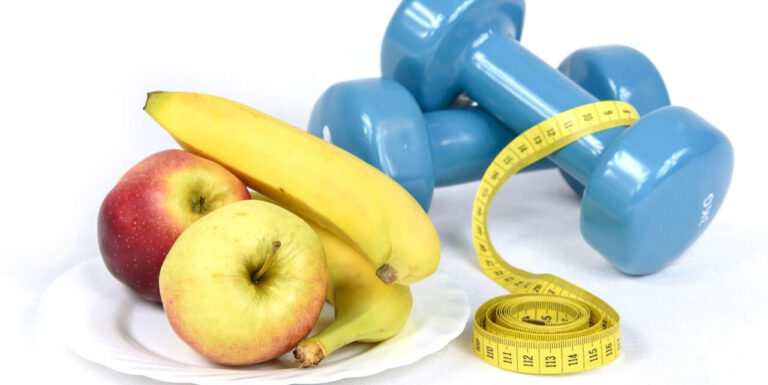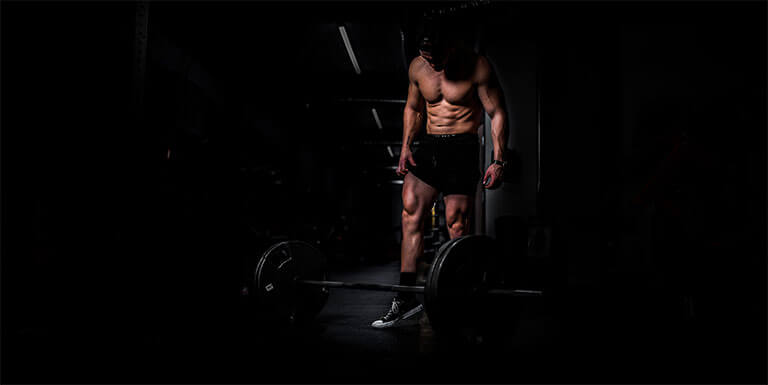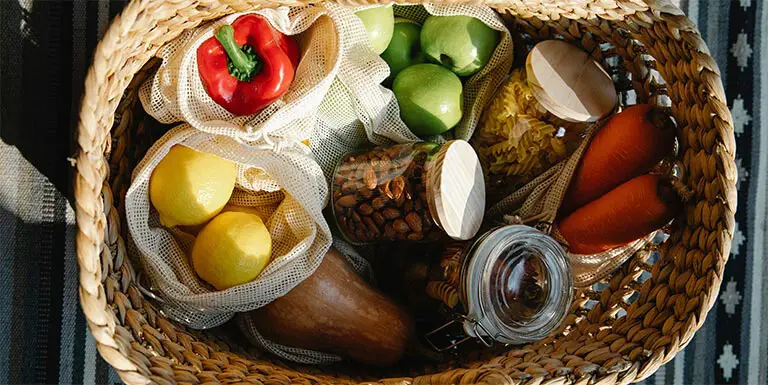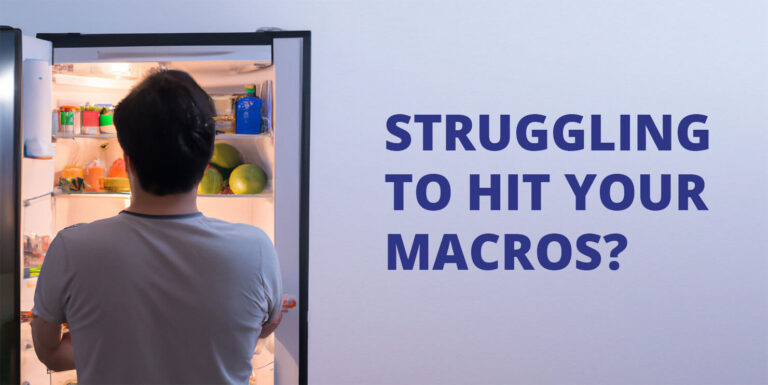Ultimate Guide: Cutting Diet for Fat Loss
A cutting diet is increasingly popular among bodybuilders and fitness enthusiasts who are looking to lose fat without losing muscle. No wonder it provides the best results when followed properly.
High level of personalization of a cutting diet ensures that you consume the right amount of calories in an appropriate macronutrient ratio. Moreover, a cutting diet combined with weightlifting is the best way to maintain as much muscle mass as possible.
Therefore, just like for most gym-goers wanting to lose fat, a cutting diet might also be the best diet for you.
This article explains how to follow a cutting diet for losing fat step-by-step.
Creating a Cutting Diet Plan
A cutting diet is tailored to an individual’s nutritional needs and fat loss goals. Most cutting diets last about 3 – 6 months, depending on the starting body fat percentage.
Same as when you make a meal plan, the first step is to determine your daily calorie intake and macronutrient ratio. Setting up the right amount of calories, protein, carbs and fats is crucial for a cutting diet plan.
Calculate Your Daily Calorie Intake
To lose weight you must be in a calorie deficit. That is eating fewer calories or burning more calories on a daily basis.
The number of calories that would put you in a deficit depends on various factors:
- Weight
- Height
- Lifestyle
- Activity Level
To calculate your daily calorie intake on a cutting diet, you have to find out how much calories you burn daily. To find an estimate of your total daily energy expenditure (TDEE), you can use a TDEE calculator.
Or you can use this formula:
Formula:
Bodyweight (lb) X 15 or Bodyweight (kg) X 15 X 2.2
Example:
170 X 15 = 2550 (calories) or 170 X 15 X 2.2 = 2550
Then, to test the accuracy of your estimate, you want to consume that number of calories and see how the number on the weight scale fluctuates. For tracking your food intake, I suggest using a food tracking app like MyFitnessPal or a calorie tracker spreadsheet.
It’s impossible to calculate precisely, but it’s essential to estimate your total daily energy expenditure (TDEE).
If you lose weight, you are eating below your TDEE. If you are gaining weight, you are eating more than you expend. Lastly, if your body weight stays the same, you are eating approximately at your TDEE level.
Then decrease the number of calories you burn daily by 20-25%. This should make you lose weight at a recommended rate of 0.5-1 kg per week (1-2 lb/week). Such a weight loss rate helps you retain the most amount of muscle mass when following a diet to get lean.
Decide on Your Protein Intake
Sufficient protein intake plays a major role in a fat cutting diet. Therefore, it’s the macronutrient you should calculate first when calculating your macros for cutting.
It’s advised to consume between 2.3 – 3.1 grams per kilogram of lean body mass. 2.3 grams of protein per kilogram of body weight is sufficient for the majority of people. In case you measure your body weight in lb, that would be around 1 gram per pound of body weight.
For example, a person with a bodyweight of 70 kg/155 lb should consume around 155 grams of protein.
Note that obese individuals should multiply the recommended amount by their lean body mass, instead of body weight.
Multiple studies show that higher protein intake is superior to lower protein intake. Especially, in terms of losing fat and retaining muscle mass during a cutting diet.
Furthermore, research suggests that various potential beneficial outcomes are associated with higher-protein diets, for instance:
- Increased satiety
- Increased thermogenesis (more calories burned processing protein)
- Improved body weight management
- Muscle retention
Besides that, some bodybuilding cutting diets require to increase the total amount of protein closer to the competition. This may provide an additional increase to satiety and a better chance for preserving the most amount of muscle.
Decide on Your Fat Intake
An appropriate amount of fat intake is something you shouldn’t neglect since the macronutrient is responsible for proper hormone production.
In addition, appropriate fat intake via high-quality sources may provide you with the following benefits:
Research suggests that 15 – 30% of your total calorie intake should come from fats when following a cutting diet.
For instance, knowing that 1 gram of fat contains 9 calories, an individual consuming 2000 kcal would eat somewhere between 33 – 66 grams of fats.
I personally, would not advise you to consume more than 30% of your total daily calories from fats. That is because foods high in fats are very calorically dense and don’t really provide additional benefits when the advised level is met.
Decide on Your Carb Intake
Carbs can improve performance, and help to recover faster which contributes to more muscle growth. Thus, keeping carbohydrates relatively high in both cutting diet and lean bulk diet is beneficial for bodybuilding.
Therefore, after you have determined protein and fats intake, the studies suggest that the rest of the calories should come from carbs.
Both carbs and protein contain 4 calories per 1 gram, 1 gram of fats contains 9 calories. So, after taking away the calories from protein and fats out of your daily calorie intake, divide the rest by 4. The result will tell you how much carbohydrates you should consume.
Taking figures from the previous examples a 155 lb or 70 kg person on a 2000 kcal cutting diet would consume 155 grams of protein (620 kcal) and 45 grams of fat (400 kcal). The remaining 980 calories would come from 245 grams of carbs.
By the way, the ratio of carbs and fats can be interchanged, depending on your preferences. So, if you are a carb lover your cutting diet macros can have a higher ratio of carbs while keeping fats lower and vice versa. However, make sure that you consume at least the minimal threshold of fats, that is about 15 – 20% of your total calorie intake.
I also recommend getting my macro cheat sheet, which will help you determine which foods to eat depending on your macronutrient needs. As well as, a macro meal plan template, which you can use to create a diet plan that aligns with your macro targets.
What to Eat When Cutting?
Once the cutting diet macros are determined, the next step is to identify the best cutting diet foods.
A successful diet for getting lean shouldn’t require you:
- Cutting sugar from your diet
- Cutting carbs from your diet
- Eliminating fats from your diet
Instead, you should be eating minimally-processed foods for the most part. Occasionally adding highly processed, less healthy foods can help you sustain a cutting diet and won’t harm your progress. As long as those highly processed foods don’t make more than 10-20% of your total calorie intake.
Besides that, the best foods for cutting can be chosen by looking at how satiating they are. The metric that measures that is called the satiety index. In 1995, Dr. Susanna Holt and her associates developed such a concept by testing 38 different foods and their ability of satisfying hunger.
This means that eating foods with a high satiety index would make you fuller. As a result, you would consume fewer calories.
The same study concludes that characteristics of the most filling foods are:
- High in protein
- Rich in fiber
- High in volume
- Low in fat
Thus, the best foods for cutting would be low-calorie density foods, with similar tendencies of the top-ranked foods measured by the satiety index:
- Lean fish and meat – fish, chicken, turkey and other lean cuts of meat.
- Eggs – whole eggs as well as egg whites.
- Low-fat dairy – low-fat milk and low-fat yoghurt without any added sugar
- Fruits and vegetables – fruits and veggies high in water and fibre like watermelon, berries, apples, oranges.
- Starchy carbs – potatoes, legumes and other root vegetables.
- Sugar-free drinks – water, black coffee, tea, as well as diet sodas
For more examples, check out this article about what to include in your cutting grocery list.
When to Eat for Weight Loss?
There is evidence that meal-timing, the time you eat and the way you space out your meals, facilitate weight loss by decreasing hunger throughout the day. Such studies suggest that high-calorie breakfast, particularly high in carbohydrates and protein tend to reduce hunger.
This means that you will probably feel less hungry if you decide to eat a larger breakfast as opposed to a larger dinner. However, it does not mean that a particular meal-timing strategy will make you burn significantly more calories.
Furthermore, nutrient timing, the time you eat specific nutrients, can help you improve training performance and recover faster. Thus, it’s advised to have evenly spaced protein feeding (approximately every 3 hours throughout the day). In addition, having higher carbohydrate intake around workouts (pre and post-training sessions).
Even though meal and nutrient-timing strategies have proven to help to some degree, I think the majority of gym-goers shouldn’t overthink about it. Simply because the fundamental factors of a cutting diet play a much bigger role than any meal or nutrient timing strategy.
On the contrary, if fitness takes up the majority of your day, the more you should focus on aspects like nutrition-timing. Especially when following a cutting diet to get “shredded” and compete in a bodybuilding competition.
Cheat Meals and Refeed Days When Cutting
When following a cutting diet for some time, the hunger tends to increase and more cravings start to appear. At that point, many fitness enthusiasts tend to get excited about cheat meals and refeed days.
Some say that it’s supposed to “shock your metabolism” and make you burn more calories after those occasional indulgences…
But, unfortunately, that’s not how it really works.
Firstly, most people prone to emotional eating should avoid cheat meals and cheat days, since it may lead to binge-eating. Which, as a result, could easily sabotage previous efforts.
However, I think, occasional tasty foods could be incorporated into your cutting diet as it makes the diet more sustainable.
Advantages and disadvantages of cheat meals
Pros of cheat meals:
- Ability to eat whatever you want
- Satisfies food cravings
- Doesn’t require calorie and macro tracking
Cons of cheat meals:
- Can lead to binge-eating
- Can cause bloating
- Difficult to replicate due to the lack of calorie and macro tracking
On the other hand, refeed days are when you significantly increase your carbohydrate intake for one or a couple of days. In the meantime, the protein intake stays the same while fats are slightly lowered to about 15%.
Generally, on refeed days you would consume about the same amount of calories as you are burning, maintenance calories, or slightly above that.
Due to higher carb intake, such refeed days can improve your training performance. Moreover, refeed days can increase fullness hormone leptin concentration and temporarily increase your energy expenditure.
Advantages and disadvantages of refeed days
Pros of refeed days:
- Satisfies cravings for specific high-carb foods
- May improve training and recovery
- Easy to replicate, methodical approach
Cons of refeed days:
- Need to track calories and macros
- Limited food options
Cheat meals and refeed days may improve performance in the gym, hormone levels, and help you with sustaining a cutting diet. However, both can impede your progress if done incorrectly.
Therefore, cheat meals and refeed days is something that competitive bodybuilders may have in their toolbox. However, for most people, such strategies would probably not be worth considering. Instead, more important elements of health and fitness should be prioritized.
Cutting Diet Tips
Here are some additional cutting diet tips:
- Stay hydrated. Drinking at least 2 – 3 litres of water daily may help you burn more calories and keep you feel more satiated.
- Eat foods high in fiber. Fiber-rich foods are not only satiating but also contain fewer calories.
- Avoid sugary drinks. Liquid carbohydrates, that are found in most sugary drinks tend to be less satiating than solid forms of carbs.
- Consider doing cardio. Research says that low frequency and duration cardio can enhance fat loss while retaining muscle mass.
- Drink coffee and drink tea. Coffee and green tea extract may increase energy expenditure and enhance fat loss.
- Supplement with creatine. Creatine is proven to increase lean muscle mass but it also may lower body fat percentage while cutting.
- Do weightlifting. It’s advised to perform resistance training workouts to retain muscle mass while following a cutting diet. Additional focus on progressive overload may also result in strength gain and muscle growth even on a cutting diet.
Final Thoughts
Usually started 3 – 6 months before a competition or an event, a cutting diet is highly popular among many trainees. Moreover, it might be one of the most effective diets for losing fat without losing muscle.
This diet is highly dependent on calculating calorie, protein, carb and fat intake appropriately, based on the individual. The combination of a proper cutting diet and workout plan is necessary to lose fat and preserve muscle mass.
A cutting diet also involves eating highly satiating, low-calorie density foods. Other strategies like meal-timing, cheat meals and refeed days may enhance results of a cutting diet if incorporated properly.
However, such strategies are more useful for competitive bodybuilders who already have fully optimized the fundamental aspects of health and fitness.
Have you tried a cutting diet before – what were your results?
Feel free to contact me if you have any questions about a cutting diet or any other fitness-related topic!
If you enjoyed reading this article – share it with your friends!

![The Ultimate Macro Cheat Sheet [FREE PDF]](https://gfitnessonline.com/wp-content/uploads/2021/10/macro-cheat-sheet-featured-768x385.jpg)




